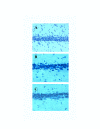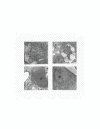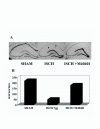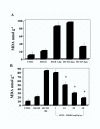The protective effect of M40401, a superoxide dismutase mimetic, on post-ischemic brain damage in Mongolian gerbils
- PMID: 12809567
- PMCID: PMC165580
- DOI: 10.1186/1471-2210-3-8
The protective effect of M40401, a superoxide dismutase mimetic, on post-ischemic brain damage in Mongolian gerbils
Abstract
Background: Overproduction of free radical species has been shown to occur in brain tissues after ischemia-reperfusion injury. However, most of free radical scavengers known to antagonize oxidative damage (e.g. superoxide dismutase, catalase), are unable to protect against ischemia-reperfusion brain injury when given in vivo, an effect mainly due to their difficulty to gain access to brain tissues. Here we studied the effect of a low molecular weight superoxide dismutase mimetic (M40401) in brain damage subsequent to ischemia-reperfusion injury in Mongolian gerbils.
Results: In animals undergoing ischemia-reperfusion injury, neuropathological and ultrastructural changes were monitored for 1-7 days either in the presence or in the absence of M40401 after bilateral common carotid artery occlusion (BCCO). Administration of M40401 (1-40 mg/kg, given i.p. 1 h after BCCO) protected against post-ischemic, ultrastructural and neuropathological changes occurring within the hippocampal CA1 area. The protective effect of M40401 was associated with a significant reduction of the levels of malondialdehyde (MDA; a marker of lipid peroxidation) in ischemic brain tissues after ischemia-reperfusion.
Conclusion: Taken together, these results demonstrate that M40401 provides protective effects when given early after the induction of ischemia-reperfusion of brain tissues and suggest the possible use of such compounds in the treatment of neurological dysfunction subsequent to cerebral flow disturbances.
Figures




References
-
- Nehls DG, Park CK, McCulloch J. Effect of the NMDA antagonist MK-801 on local cerebral blood flow in focal cerebral ischaemia in the rat. J Cereb Blood Flow Metab. 1989;9:S376–S376. - PubMed
-
- Katsura K, Kristian T, Siesjo BK. Energy metabolism, ion homeostasis, and cell damage in the brain. Biochem Soc Trans. 1994;22:991–996. - PubMed
Publication types
MeSH terms
Substances
LinkOut - more resources
Full Text Sources
Miscellaneous

